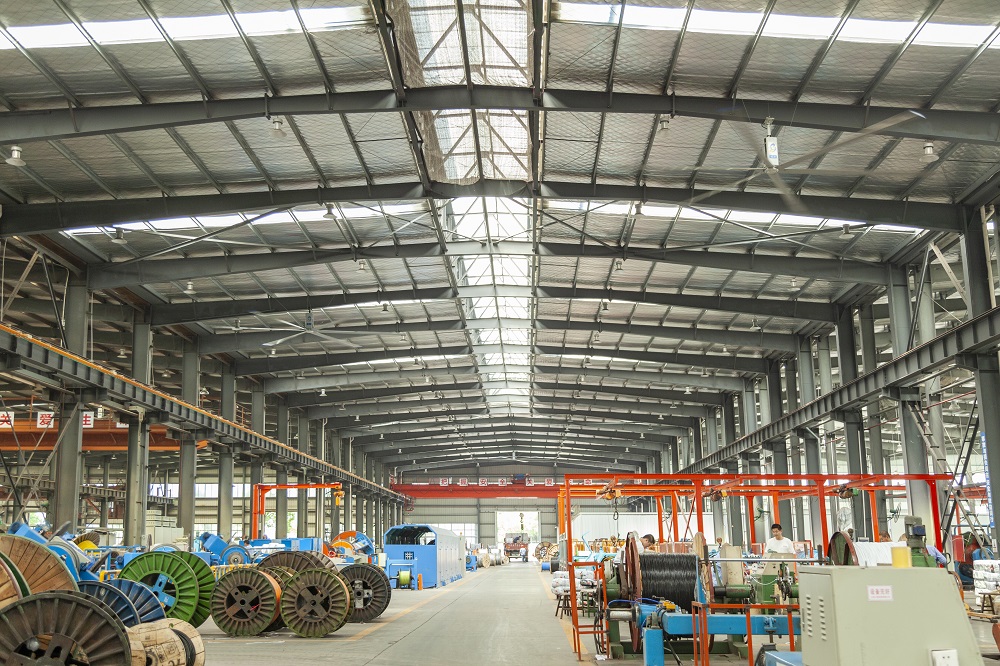When choosing HVLS fans, the user may be confused and not know which kind is better. While a good industrial fan is not only meeting performance requirements but also involves safety and noise.
Five safety standards for HVLS fans are as follow:
1. Check whether the motor head and the whole machine will shake when rotating in low and medium-speed gears, especially in high-speed gears.
2. After a long period of high-speed rotation (at least 1 hour later), perceive the heat generated from the front shell of the industrial fan by hand or other instruments. If it feels very hot, it indicates that the industrial fan motor has poor heat dissipation performance.
3, look at the speed, power, air volume, noise, and other parameters (industrial fan speed, power, air volume, and noise is proportional, that is to say, the higher of fan speed, the power and air volume are greater, the noise will also become larger, part ventilation cooling effect is better).
4, see whether there is an intermittent pause in high-speed rotation around the head and whether the head is not in place.
5. Gaxiao industrial fan is designed with brand-new mortise and tenon structure connection mode, which has the function of real anti-collision.
Then, we need to observe the noise of HVLS fans. What are the sources of noise?
1. Vibration. If the rotor of the fan rotates, the rotor's physical center of mass and the center of inertia of the rotating shaft are not on the same axis, which will lead to an imbalance of the rotor. The close distance between the rotor's physical center of mass and the rotor's center of inertia is called eccentricity, and the imbalance of the rotor will result in eccentricity. When the rotor rotates, a force acting on the support of the rotor will be generated due to the action of centrifugal force, resulting in vibration, and vibration will be transmitted from the base path to all parts of the machinery.
2. Wind noise. At the rotating of large industrial fans, the blades are periodically subject to the pulsating action, resulting in noise; On the other hand, the blade itself and the pressure on the blade are not evenly distributed, so it is easy to disturb the surrounding gas and parts during the rotation, which also constitutes the rotation noise. In addition, vortex noise is generated by the pulsation of pressure distribution on the blade due to gas flowing through the blade generating the turbulent attachment layer, vortex, and vortex separation. The noise of these three reasons can be called "cut wind noise," the fan with general wind & big wind pressure, its cut wind noise is bigger also.
3. Abnormal sound, wind noise sounds like just the wind, but the abnormal sound is different; during the rotation of the industrial fan, if except the wind, there are still other sounds, you can judge the industrial fan has abnormal sound. The abnormal sound may occur due to foreign matter or deformation in the bearing, collision for improper assembly, or uneven motor winding, resulting in looseness. The service life of the fan is the working time of the radiator product working normally without breakdown; high-grade industrial fan use life can achieve tens of thousands of hours commonly.
When the fan works, the size of the noise is affected by many factors; the unit is the decibel (dB). When measuring the large fan's noise, it shall be carried out in the muffler room with noise less than 17dB, one meter away from the fan, aligned with the fan's air inlet along the direction of the fan shaft, and measured in A-weighted way.
4. The spectral characteristics of industrial fan noise are also very important. Therefore, recording the noise frequency distribution with a spectrograph is necessary. Generally, the noise of the fan should be as small as possible, and there should be no abnormal sound. Fan noise is related to friction and airflow. Fan rotation speed is higher, wind quantity is larger, the noise that causes can also be bigger, and the element of the fan's vibration cannot be ignored. Of course, a high-quality fan will have very little vibration of its own, but the first two are difficult to overcome. To solve this problem, try using a larger fan. In the case of the same air volume, the working noise of the large fan at a lower speed should be less than that of the small fan at a higher speed.
GX is one of the professional industrial ceiling fan manufacturers in China. With our own R&D team, we are always ready to help you increase air circulation and reduce energy costs.
Source: Gaxiaofan Press Department
Publication Date: 5/6/2019

